Suicide is an incredibly complicated issue.
There are an overwhelming number of contributing factors, and it affects every demographic regardless of age, race, or social class. Factors affecting certain communities may, however, lead to higher suicidal ideation and behavior within those demographics.

In the United States, suicide is the third leading cause of death among people aged 15-24, and it is estimated to claim the lives of roughly 125 Americans every day. Risk factors are many and varied. They include, but are not limited to:
Statistics can be misleading on which demographics are most at risk of suicide. Among the highest-risk groups overall (teenagers and young adults), females are almost twice as likely to attempt suicide but males make up the majority of actual suicides.

This is due to a handful of different factors, most significantly social stigma preventing many males from seeking help when experiencing distress.
The likelihood of a teenager or young adult attempting suicide also rises significantly if that person is a member of the LGBTQ+ community, especially if they are lacking sufficient family or community support.

The risk can be greatly reduced if a person is surrounded by family or friends who are openly supportive and affirming of their sexuality or gender identity. Even more so if medical and community resources for helping them understand and affirm their identity are widely available.
Overall, in the U.S. there are around 45,000 suicides each year out of 1.1 million yearly suicide attempts. There are many organizations dedicated to keeping that number on a steady decline, including:

Overwhelmingly, the best means of early suicide prevention are:
These methods are not guaranteed, and there is still a very long way to go in managing this complex and serious public health issue, but education and awareness are an important first step.

No matter how overwhelming it may feel, intervention IS effective, and the more we continue to do so, the more lives will be saved. If you or a loved one are currently struggling with thoughts of self-harm, please stop right now and dial 988 on your phone, or text HOME to 741-741 to speak with a crisis counselor.

Suicide is currently an incredibly pressing issue in our world. In the United States, suicide is the third leading cause of death among people aged 15-24, and it is estimated to claim the lives of roughly 125 Americans every day.
With so many suffering in our country, and others suffering from mental illness and suicidal thoughts, it is important for all of us to know how to recognize when someone in our life is at risk of suicide.
However, it is not always readily apparent when someone is struggling with self-harm or planning to take their life. The signs can be subtle and easy to miss. We hope this guide can point out some things to look for so you can recognize when intervention is necessary.
Your awareness may save a life.

There is no singular cause of suicidal ideation or behavior. A variety of situations or life circumstances may be the catalyst for someone wanting to end their life. Risk factors include but are not limited to:

In most of these circumstances, severe mental illness is present—which can make the other issues all the more difficult to handle.
For someone who is suffering from one or more of these factors, it may feel like the only way out is to end their life. They may also feel their struggles make them a burden on others and that it would be better for everyone if they were gone.

There is no definitive way to determine who is most at risk. However, factors affecting certain communities may lead to higher suicidal ideation and behavior within those demographics.
No matter what, having access to support from family and community is a major factor in improving the odds of survival and recovery for a person struggling with suicidal ideation. This makes it crucial for as many people as possible to know how to recognize the signs and intervene.

As previously mentioned, it is not always obvious when someone is struggling. A person who is feeling suicidal may not be very forthcoming, especially in communities where mental illness and suicide are not often discussed in a supportive manner.
Even so, there are some common signs to watch for that may indicate a loved one is in need of support or intervention.
Major warning signs someone may attempt suicide include:
These signs may or may not indicate an imminent suicide attempt, but they should be taken very seriously. Action should be taken as quickly as possible to provide individuals with these indicators of support and to help them find professional help to improve their situation and outlook.
There are likewise a few signs to watch for that may indicate the person is in immediate danger, including:

Any of these three signs should prompt you to immediately reach out to a mental health professional or to call or text the 988 Suicide & Crisis Lifeline for instructions on how you should respond.
If you become aware that the person is in crisis and immediately at risk of harming themselves, call 911 or bring them to an emergency room right away.
Don’t second guess your concern if you see these signs. No reaction is an overreaction when it comes to keeping your loved one safe.
Overwhelmingly, the best means of early suicide prevention are:

If your loved one has reached out to you for help, or if you have noticed any of the warning signs and the situation is not yet an emergency, the next steps are to begin intervention.
Talk to your loved one. If they have not yet confided in you, ask if they have been thinking about suicide, and listen without judgment as they talk about how they are feeling.
After establishing the need for help, involve other trusted members of the person’s family or community to create a support network for them as they navigate this difficult time.
Ultimately, anyone who is struggling with suicidal thoughts or behavior should receive help from a mental health professional.

Their current state of depression or hopelessness may not allow them to seek this help on their own. As part of your intervention, you may need to help them make an appointment with a professional and follow up. This help can ensure they are able to properly begin their road to recovery.
For more information on effective intervention and prevention, you can refer to our guide to effective suicide prevention here.
Every year in the United States alone, around 45,000 people die by suicide. This number represents an epidemic marked by an unprecedented rise in the number of suicide deaths in the U.S. since the early 2010s.

Suicide is an incredibly complicated issue. There are an overwhelming number of contributing factors, and it affects every demographic regardless of age, race, or social class. The prevalence and universal nature of suicide merit far more discussion nationwide. Unfortunately, because it is such an unpleasant and difficult issue, it remains a taboo topic in many communities.
In the face of such overwhelming statistics, it may seem impossible to make a difference. However, through awareness and effort, individuals and communities can work together to exponentially reduce suicide.
Effective suicide prevention happens at many different levels, ranging from individual to systemic, but direct prevention begins at the individual level.
This post will take you through effective steps you can take if you or a loved one are at risk of suicide or self-harm.

Suicide intervention on an individual level most often comes from the friends or family of someone struggling with suicidal feelings. However, it’s important to note that it can also come from the person struggling as well.
Not every individual experiencing suicidal thoughts or behavior will have the ability or the desire to intervene on their own behalf. But, if you are having thoughts of harming yourself, you don’t need to feel helpless in your own intervention.
Your life and your agency matter. If you feel capable of reaching out, you can start the ball rolling on your recovery and maintain some control over how and from whom you receive help.

Here are some steps for effective suicide prevention for yourself:
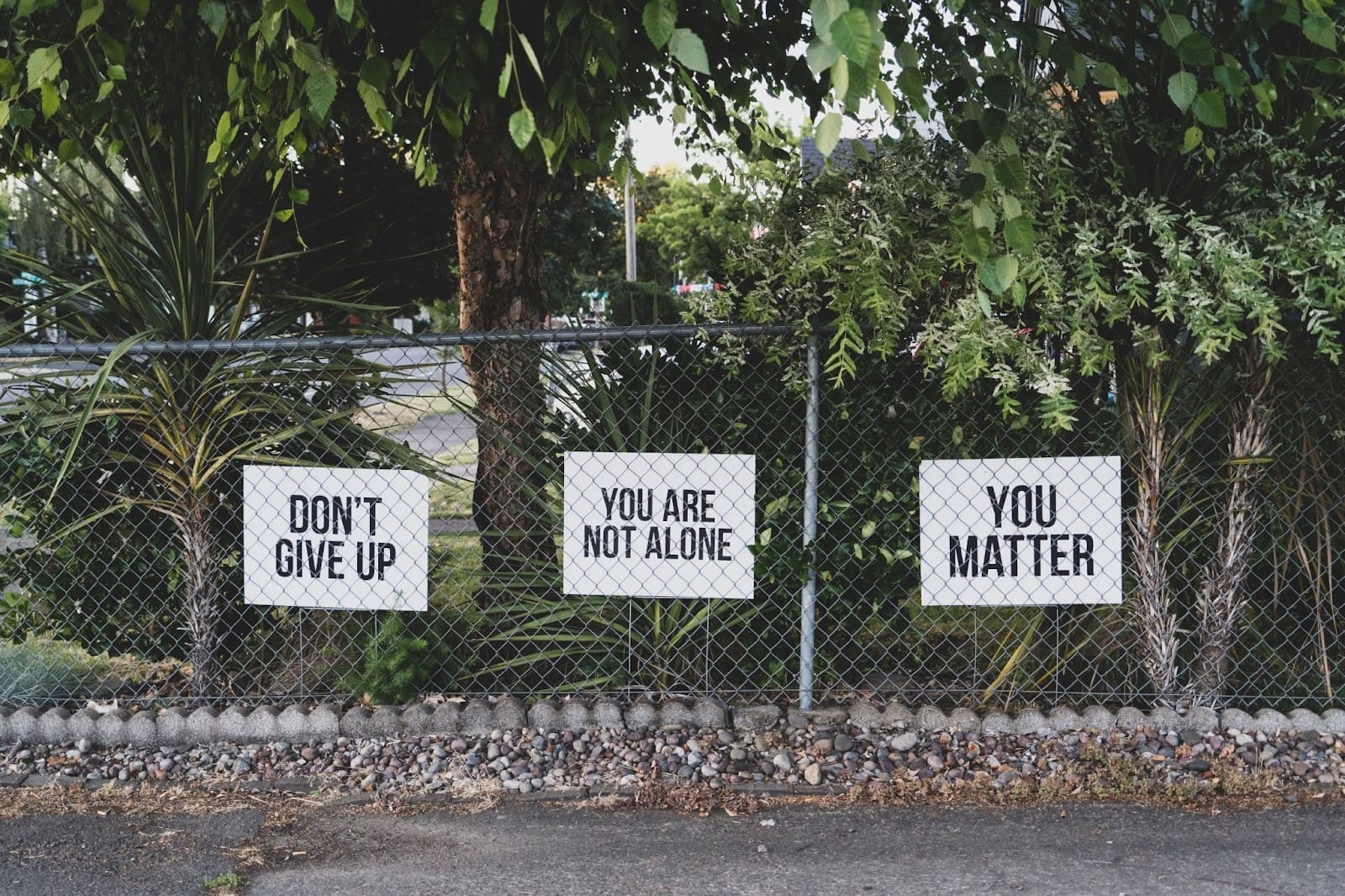

The Suicide Prevention Resource Center has provided this excellent safety plan template where you can write down a plan for if you enter crisis mode and are unable to think clearly. Share this plan with someone you trust who can recognize when you are in crisis and take action.
If you are in crisis and need help immediately, call 911 or have a friend or family member get you to mental health urgent care or an emergency room.
A suicidal person may not be capable of reaching out for help on their own. In those cases, it can fall to a friend or relative to notice the signs and intervene.

Here are some steps for effective suicide prevention for a loved one:

This is not the time for tough love. Do not try to convince the person that their problems aren’t that bad or that they are selfish for wanting to take their life. They need to know you are not disappointed in them for feeling this way and that you are taking their struggle seriously.

Your loved one may be too depressed or paralyzed to take action toward healing on their own, so they may need your help to take steps for long-term prevention as well. If so, it is crucial that you follow through on finding reliable help for them from your community or a professional.
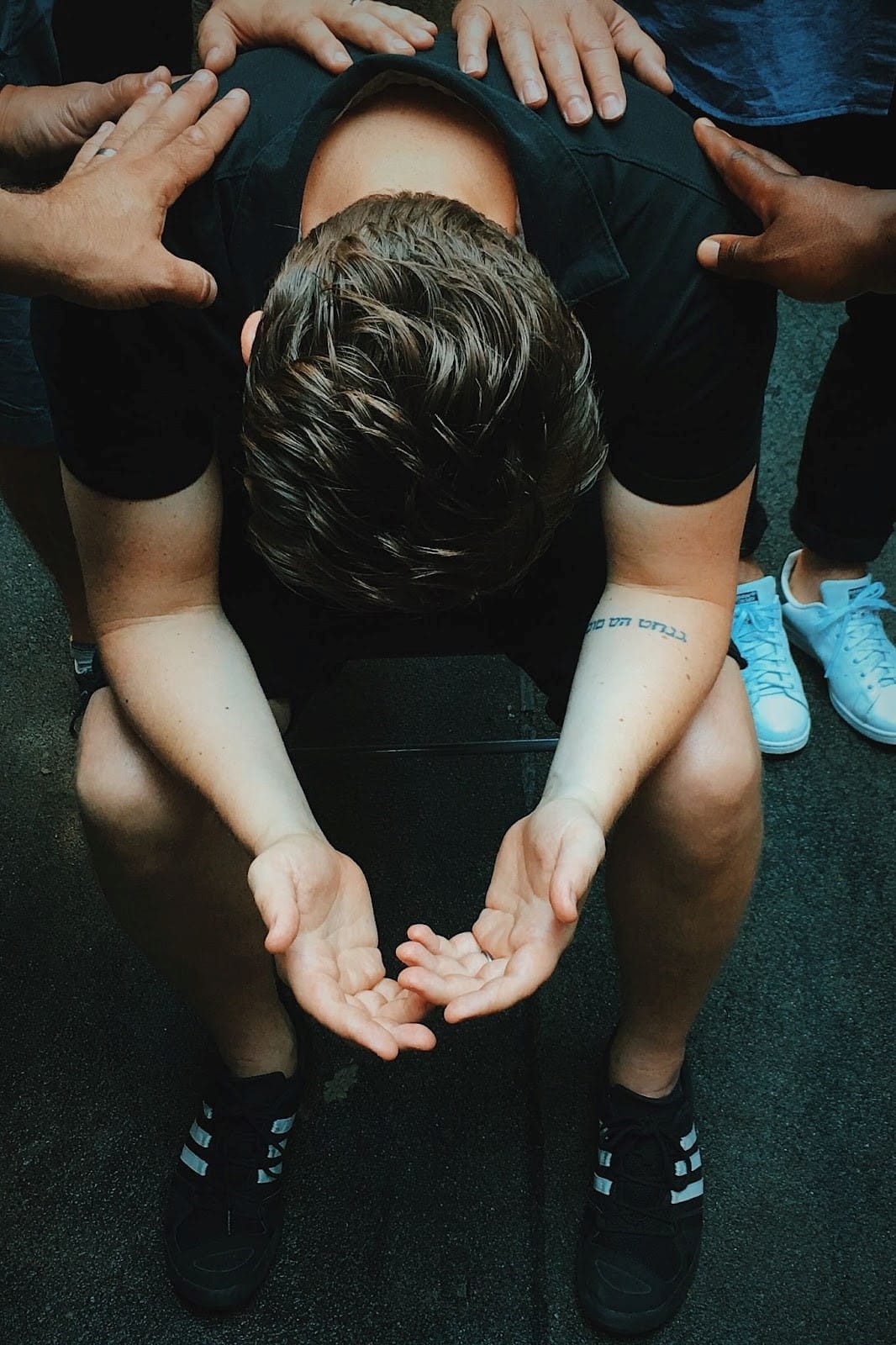
Whether it’s yourself or a loved one, a suicidal crisis can be a scary thing to navigate. That’s why we at Bio-One hope this guide will help you know how to intervene to keep yourself or the people you love safe.
Part of our mission is to provide community resources. That’s why we dedicate so much of our time to projects like this. We want to create a future where we never have to answer another suicide call again.
Every year in the United States alone, around 45,000 people die by suicide. This number represents an epidemic marked by an unprecedented rise in the number of suicide deaths in the U.S. since the early 2010s.

Suicide is an incredibly complicated issue. There are an overwhelming number of contributing factors, and it affects every demographic regardless of age, race, or social class. The prevalence and universal nature of suicide merit far more discussion nationwide. Unfortunately, because it is such an unpleasant and difficult issue, it remains a taboo topic in many communities.
In the face of such overwhelming statistics, it may seem impossible to make a difference. However, through awareness and effort, individuals and communities can work together to exponentially reduce suicide.
Effective suicide prevention happens at many different levels, ranging from individual to systemic, but direct prevention begins at the individual level.
This post will take you through effective steps you can take if you or a loved one are at risk of suicide or self-harm.

Suicide intervention on an individual level most often comes from the friends or family of someone struggling with suicidal feelings. However, it’s important to note that it can also come from the person struggling as well.
Not every individual experiencing suicidal thoughts or behavior will have the ability or the desire to intervene on their own behalf. But, if you are having thoughts of harming yourself, you don’t need to feel helpless in your own intervention.
Your life and your agency matter. If you feel capable of reaching out, you can start the ball rolling on your recovery and maintain some control over how and from whom you receive help.

Here are some steps for effective suicide prevention for yourself:


The Suicide Prevention Resource Center has provided this excellent safety plan template where you can write down a plan for if you enter crisis mode and are unable to think clearly. Share this plan with someone you trust who can recognize when you are in crisis and take action.
If you are in crisis and need help immediately, call 911 or have a friend or family member get you to mental health urgent care or an emergency room.
A suicidal person may not be capable of reaching out for help on their own. In those cases, it can fall to a friend or relative to notice the signs and intervene.

Here are some steps for effective suicide prevention for a loved one:

This is not the time for tough love. Do not try to convince the person that their problems aren’t that bad or that they are selfish for wanting to take their life. They need to know you are not disappointed in them for feeling this way and that you are taking their struggle seriously.

Your loved one may be too depressed or paralyzed to take action toward healing on their own, so they may need your help to take steps for long-term prevention as well. If so, it is crucial that you follow through on finding reliable help for them from your community or a professional.

Whether it’s yourself or a loved one, a suicidal crisis can be a scary thing to navigate. That’s why we at Bio-One hope this guide will help you know how to intervene to keep yourself or the people you love safe.
Part of our mission is to provide community resources. That’s why we dedicate so much of our time to projects like this. We want to create a future where we never have to answer another suicide call again.

Usually when an issue becomes large enough to classify as an epidemic it becomes a central topic of discussion. Unfortunately, many of us don’t quite know how to handle ourselves when it comes to conversations around suicide.
Suicide as a topic of discussion is somewhat of a taboo in our society for a number of reasons.
Many people are uncomfortable talking about death in any regard. The same can be said for the topic of mental illness. Because discussions about suicide usually require talking about both, the subject is often avoided outright.

This stigma can be incredibly isolating.
For someone struggling with thoughts of suicide, it may prevent them from reaching out for help or talking about how they are feeling. For those who have recently lost a loved one to suicide, they may likewise feel unable to reach out for support.
One of the best means of prevention and support for both victims and survivors is open conversation. We owe it to our communities to get better at talking about suicide. Here are some steps we can all make in the right direction in order to end the stigma.
Destigmatizing the conversation around suicide requires, first, confronting some of the unhelpful ways we speak and act about it. Before we can change the conversation, here are some of the things we need to stop doing:

When speaking about suicide, it’s important to recognize that it’s impossible to know who might be struggling.
There is no singular type of person who struggles with mental illness or suicidal ideation. Implying that suicidality should look or present a certain way may increase the feelings of failure and isolation in those who don’t fit the mold.
Often the language around suicide frames it in a way that paints it as criminal or selfish.
This kind of thinking can make people struggling with suicidal thoughts feel ashamed and hesitant to tell anyone they are suffering. It can also make surviving friends and family hesitant to talk about what they’re going through out of fear that their loved one will be judged for taking their own life.

Many people report that after they reach out about struggling with suicidal thoughts people around them start treating them differently. It’s common for members of a family or community to tread extra carefully around a suicidal person as if saying the wrong thing might set them off.
This does not go unnoticed and makes it harder for sufferers to be willing to reach out the next time. Similarly, it can make survivors of suicide feel like their grief is inconvenient or that they are being overemotional.
Reject the idea that depression or grief makes people too fragile to treat normally.

It is never helpful to tell anyone who is struggling for any reason that their pain is insignificant compared to others in the world.
Mental illness affects people regardless of their life situation.
Their pain is real whether or not you think they should be feeling it.
Minimizing will add guilt and only make a person feel worse.
Avoiding discussion of suicide when someone is struggling or has suffered a loss is never helpful. Dodging the topic and pretending everything is fine won’t make the problem go away.
If we stop treating suicide like a dirty word, it will be easier for people to talk about it when they need help.
Knowledge can go a long way toward improving the way we talk about suicide. If you are interested in becoming more comfortable with the topic, a good place to start is learning more about it.

There are many incredible resources that speak in plain language about suicide in a way that is helpful in knowing how to approach the topic. Here are some helpful links to get you started:

As you become more informed, normalize speaking about mental health and suicide in your social circles.
If you have struggled with your own mental health, be willing to speak openly about it. It’s more than likely that others have had similar struggles but have felt alone because of stigma.
Even the way we speak about victims of suicide can be improved by normalizing discussion.

We should be willing to talk about those we have lost to suicide in a way that acknowledges their experience without judgment.
Some people worry this sort of discussion may encourage others to act on their own suicidal thoughts. In fact, the opposite is true.
Open and empathetic acknowledgment of the pain of the victim and the pain of their loss can embolden others to reach out for help without fear of judgment.
One of the best things you can do to destigmatize the discussion of suicide is to become comfortable with asking and listening.

If you suspect somebody is having a difficult time, make it a normal practice to ask them sincerely about how they’re feeling. If they feel you are a safe person to be vulnerable with they are more likely to open up.
Listen to them without judgment and with the intent to understand.
Treat anybody who opens up to you about mental illness or grief as if it is perfectly normal for them to do so. The more calm empathy people receive, the easier it will be for them to talk. The more people someone is able to talk to, the bigger their support system and the better their chances of recovery.
Another important resource built around listening is the 988 Suicide & Crisis Lifeline. This free resource is for anyone experiencing a crisis and it connects people with skilled crisis counselors who listen and provide immediate support. For more information, visit 988lifeline.org or read our dedicated article.
As you become more comfortable speaking about suicide in your own social circles, you can use your voice to help others.

Speak up to advocate for better support and resources in your community.
The more community members and leaders are made aware of the prevalence of suicide, the greater the call will be for improved conversation and support for those who are struggling.
— Whether it’s yourself or a loved one, a suicidal crisis can be a scary thing to navigate. That’s why we at Bio-One hope this guide will help you know how to intervene to keep yourself or the people you love safe. We want to create a future where we never have to answer another suicide call again.
Even with the best intentions, our homes sometimes become more than we can manage on our own. There’s no shame in realizing a task is more than you can manage on your own.

As you make a plan to tackle your decluttering and cleaning needs, think through who can support you:

Is there anyone who lives in the home who can help you, such as a partner, children, or
roommate? Consider reaching out to your parents, siblings, adult children, or extended family
members for support. Friends can make the decluttering process more fun, because you can chat as you work.

Sometimes, you need support from someone with a little more training.
You might not have personal relationships where you’re comfortable asking for help, or you may simply need to delegate the task to someone else due to demands on your time.
Regardless of the reason, there are many different types of support.

They usually do not assist with decluttering, but they will clean the space. Sometimes hiring someone can be a motivation for you to declutter in order to give them space to clean!

A handyman can help you install shelves to aid with organization and make minor home repairs, which can make it easier to keep things clean. A handyman (or team) can also help with high-level repairs if you have larger issues or structural damage in your home.

Professional organizers can give you a specific method to declutter with their guidance. They can help you troubleshoot issues and give you accountability—or do it for you. Be sure to choose an organizer who will set you up for success in maintaining your space long-term.

For the most serious cases, you can hire hoarding cleanup specialists to help you get your home under control. Companies like Bio-One are trained to provide discreet, sensitive, and comprehensive service. They are experienced with biohazards and other situations where high-level training is a must.

Hoarding often stems from mental health struggles, and involving a professional can help you treat the root cause of the clutter. Support persons may include:
Regardless of whether you’re taking a do-it-yourself approach to decluttering your home or assembling a dream team of support staff, be sure to celebrate your wins.
Cleaning up your home is an overwhelming task many people avoid. Every time you meet with success, you will be that much more motivated to keep going!
By taking it one day and one small space at a time, you can conquer the clutter.

We are invested in community well-being, and we perform our cleaning services with compassion and discretion. We understand the importance of developing trust with our clients as we are invited into their homes. At Bio-One, we live in the communities we serve and do what we do because we truly care.
Before we begin the cleaning process, we will talk with you to learn your goals. We’ll evaluate details about your particular situation, including:
We will also obtain a work order document to give our technicians permission to work
on your property and a property retention document so we know which items you would like to save.
Every technician working on your property will be familiar with this document so we know what to keep an eye out for.

We can’t guarantee we will find everything, but we make sure everyone is looking!
During the cleaning process, we will:

If you’re ready to start working with Bio-One, give us a call anytime at (480) 276-4061. Our lines are open 24 hours a day, 7 days a week, 365 days a year. Alternatively, fill out a service request on our website.
The word? Kids. Organization is all well and good, but what if you have kids in the mix?
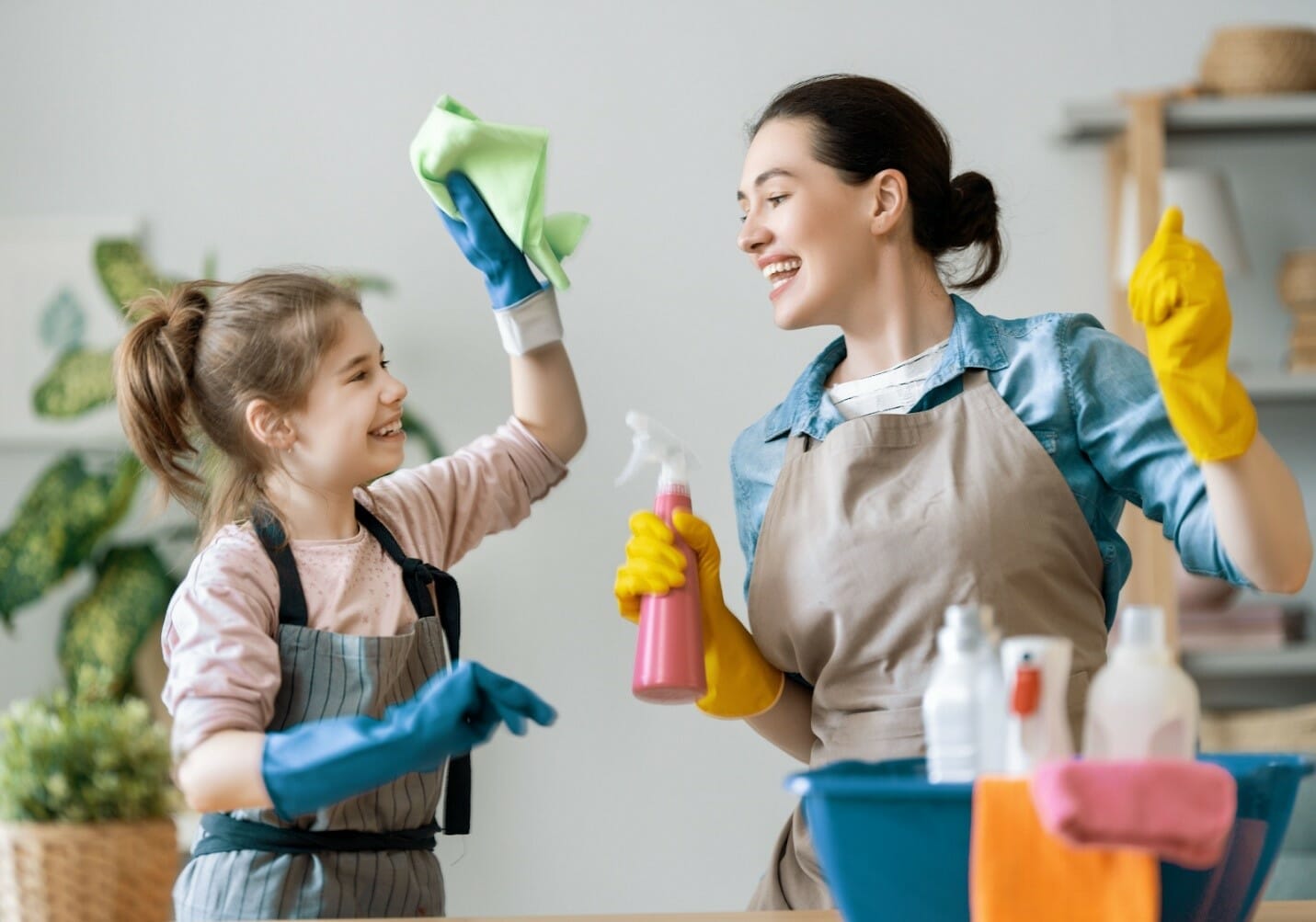
Kids usually make life messier, and they can also make it difficult to stay on task when cleaning or organizing. When you’re being interrupted to attend to someone else’s needs, you have to re-motivate yourself to go back to cleaning every time. It can be a struggle!
However, even though it can be hard to keep up with cleaning when kids are living in the house, you can still successfully have a clean, organized home… at least some of the time!
Spoiler alert: Why not involve them?
Your kids can and should help! You’ll be teaching them good habits for the future.
Here are 5 tips for getting kids involved with your decluttering projects:

Depending on what needs to be done, you can either enlist your kids’ help or find ways to distract them.
If they’re elementary-aged, give them something simple and bite-sized to do, like sorting items into a bin or small cleaning tasks with nontoxic chemicals. Younger kids can make it more of a game—you can give them a cloth and water to “pretend clean,” ask them to sort colors of items on the floor, or something similar.
If they’re teens, they can be counted on to take on some real tasks.

Your kids probably won’t clean things to your standards. However, that doesn’t mean they
aren’t helping, or that you have to redo their work—at least not every time!
When you do this, your kids are taking on responsibilities, learning new tasks, and trying to help you. Their version of done will be better than nothing being done at all.
When you delegate tasks to avoid getting overwhelmed, you’re lightening your load and getting something done that might have been otherwise ignored.
You don’t want to micromanage your kids, but you can gently give them good advice to help them clean effectively. Creating checklists or sticker charts can also help—these tools are motivating and can help kids take ownership of their responsibilities.
When we turn chores into games, our brains receive a burst of motivation that inspires us to do the activity again. (This strategy works for adults as well as kids!)
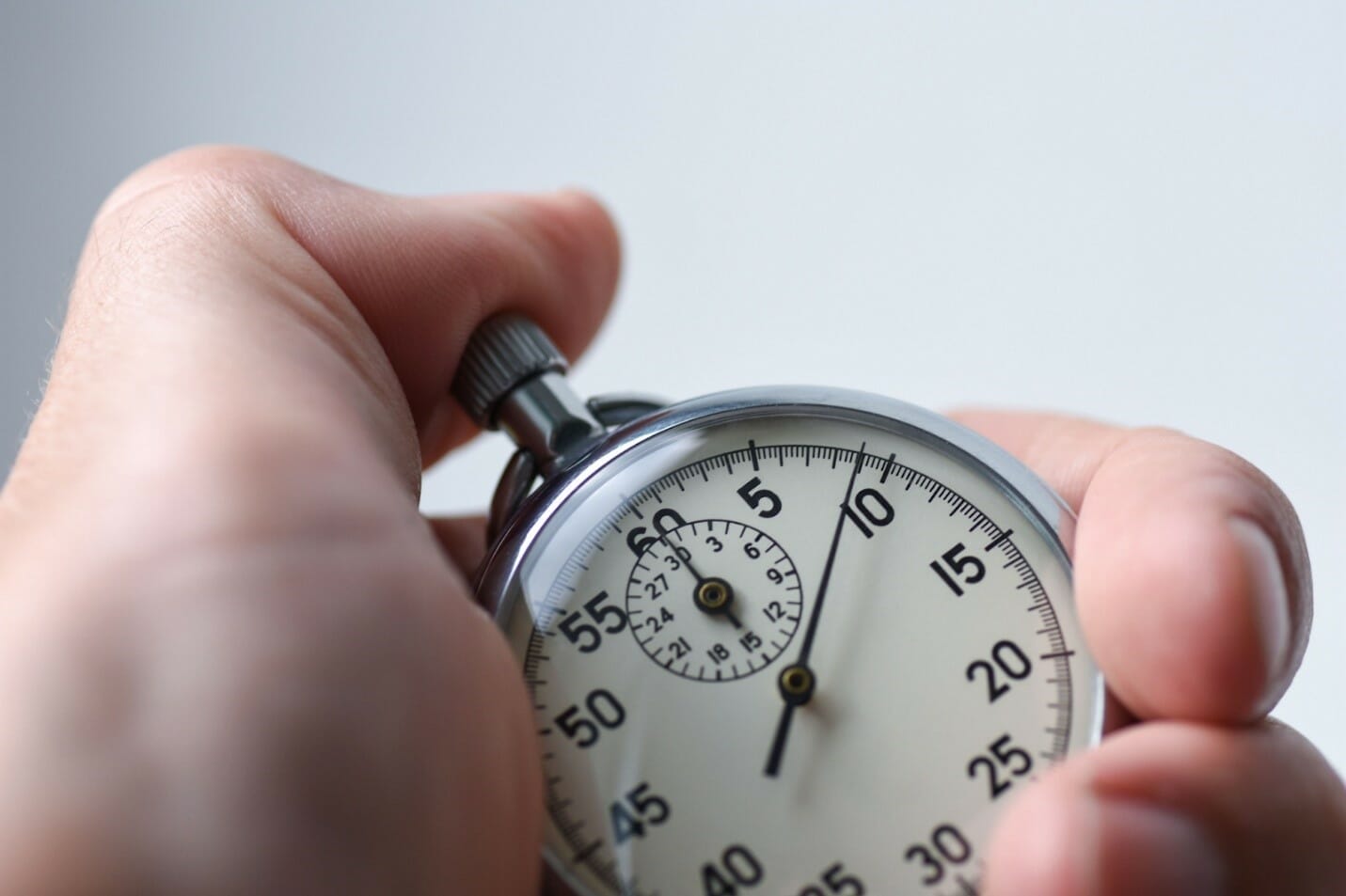
Try making it a race or setting a timer. You can turn anything into a competition or challenge and it becomes instantly more exciting.
Connect a cleaning habit with another one. For example, every time your kid brushes their teeth, they wipe off the counter or put away 5 bath toys.

Do you have items in your closet that still have the price tags attached? When you bring something new in, you need to take something old out. Whether it be your closet, car, or garage, the same rule applies.
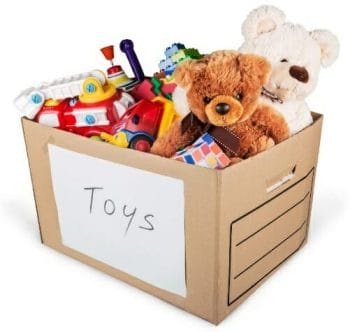
Label storage areas clearly so kids know where to put their toys. The more you help them succeed with simple tasks like this, the less work you’ll have to do and the more accomplished they’ll feel.
When birthdays or holidays are coming up, encourage your kids to choose some items to give away before the big day to make space for new ones. (Or do this yourself if your kids are too young to understand.)
Give kids an incentive to complete their tasks. For example, if they declutter 25 items from their rooms, they can go on an outing with you, receive a certain amount of screen time, have a friend over, etc.
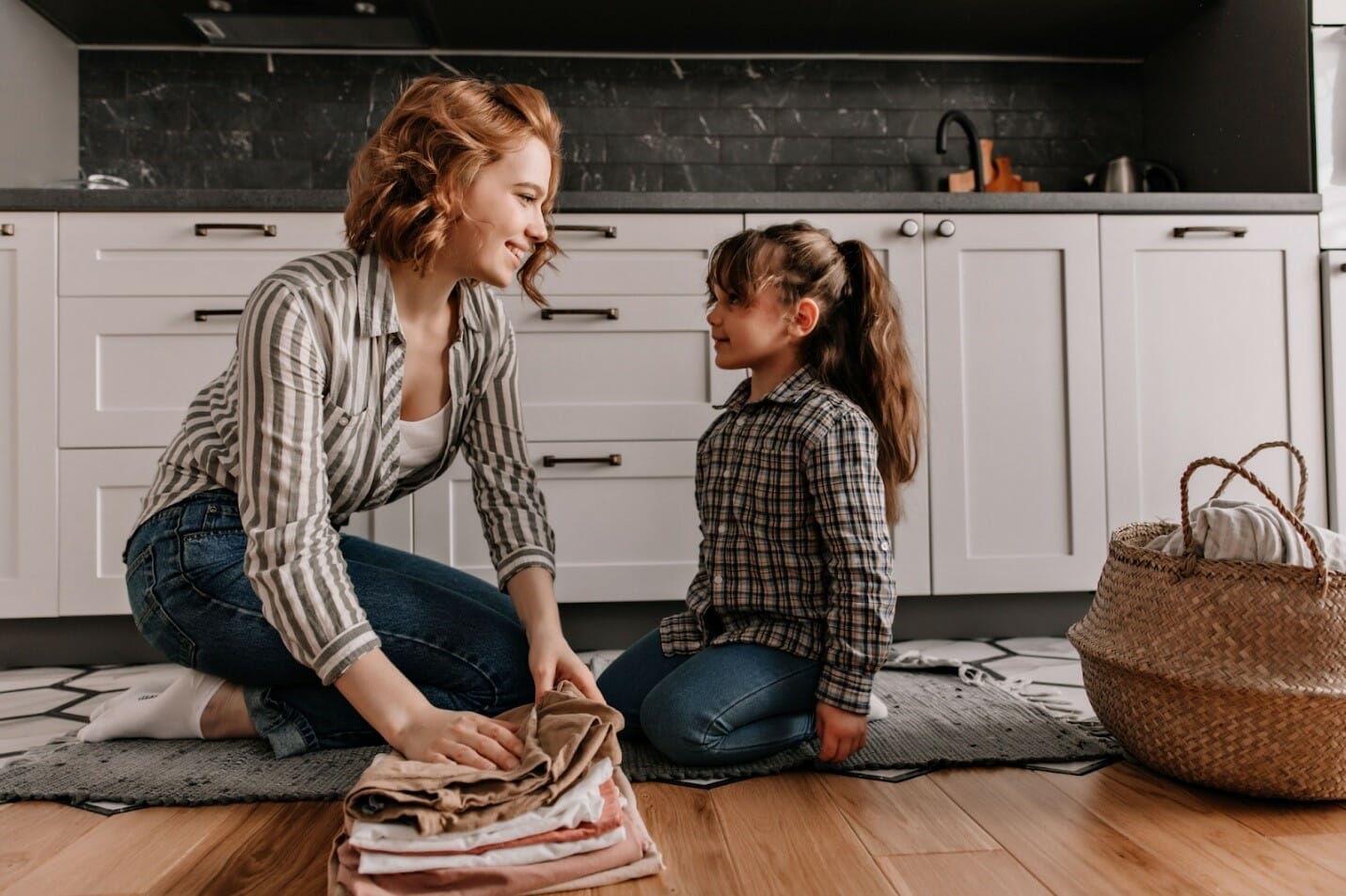
When kids see that you value decluttering, they will also learn to value it.
Don’t forget to make use of the resources available to you to give yourself a break. That’s why just about every parent is in Level 1 or Level 2 of the hoarding scale we reviewed earlier—at the very least.
Try hiring a babysitter or mother’s helper for a few hours.
If it’s financially possible, hiring a housekeeper or maid can remove some of the burden of cleaning off your shoulders.
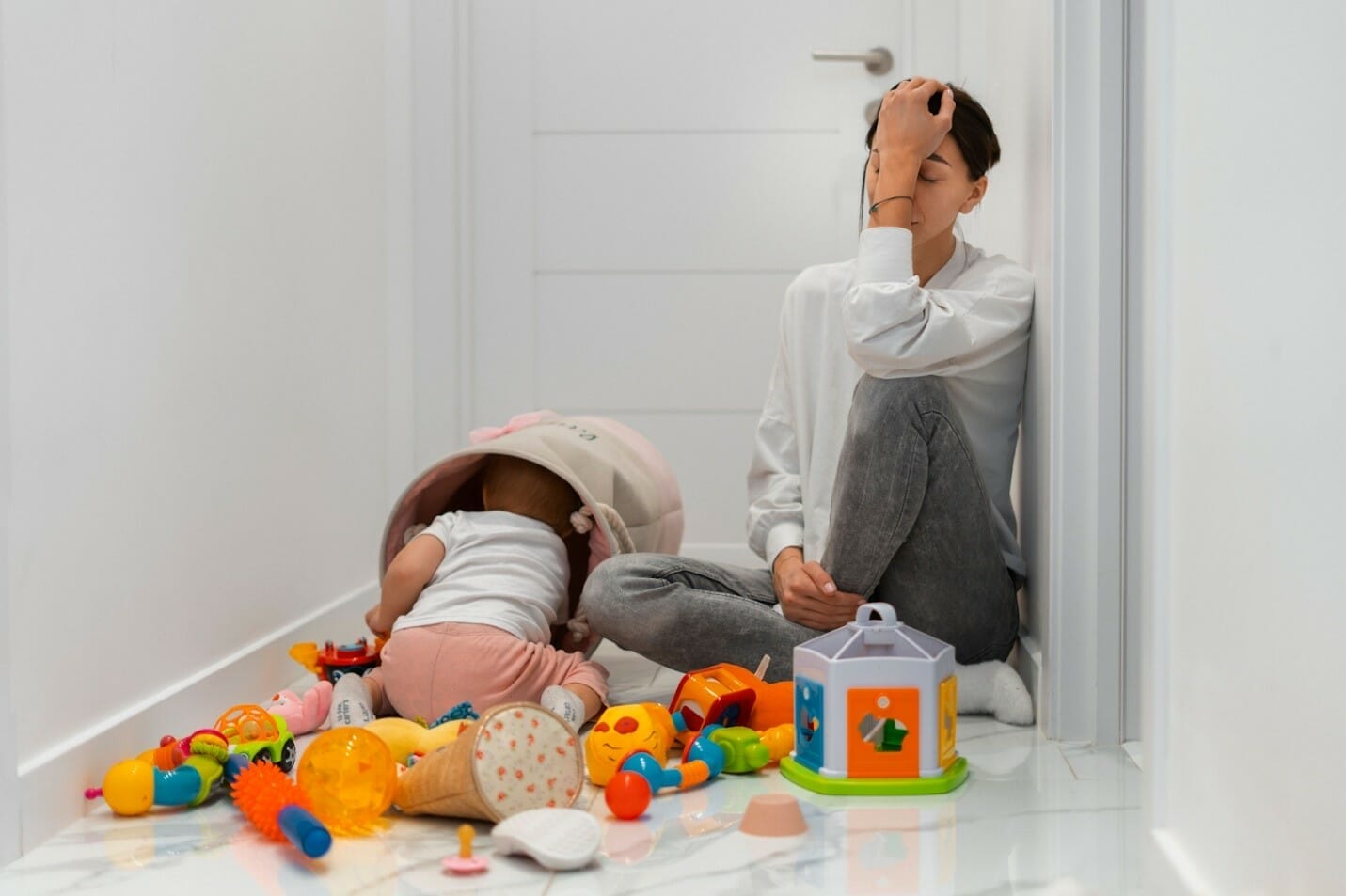
It’s probably not a season where you’ll have a pristine home all the time, but spending even a little time decluttering can help you feel more sane.
Get started on your journey to living in a home that feels comfortable and welcoming.
Here are the 5 steps to efficient cleaning:
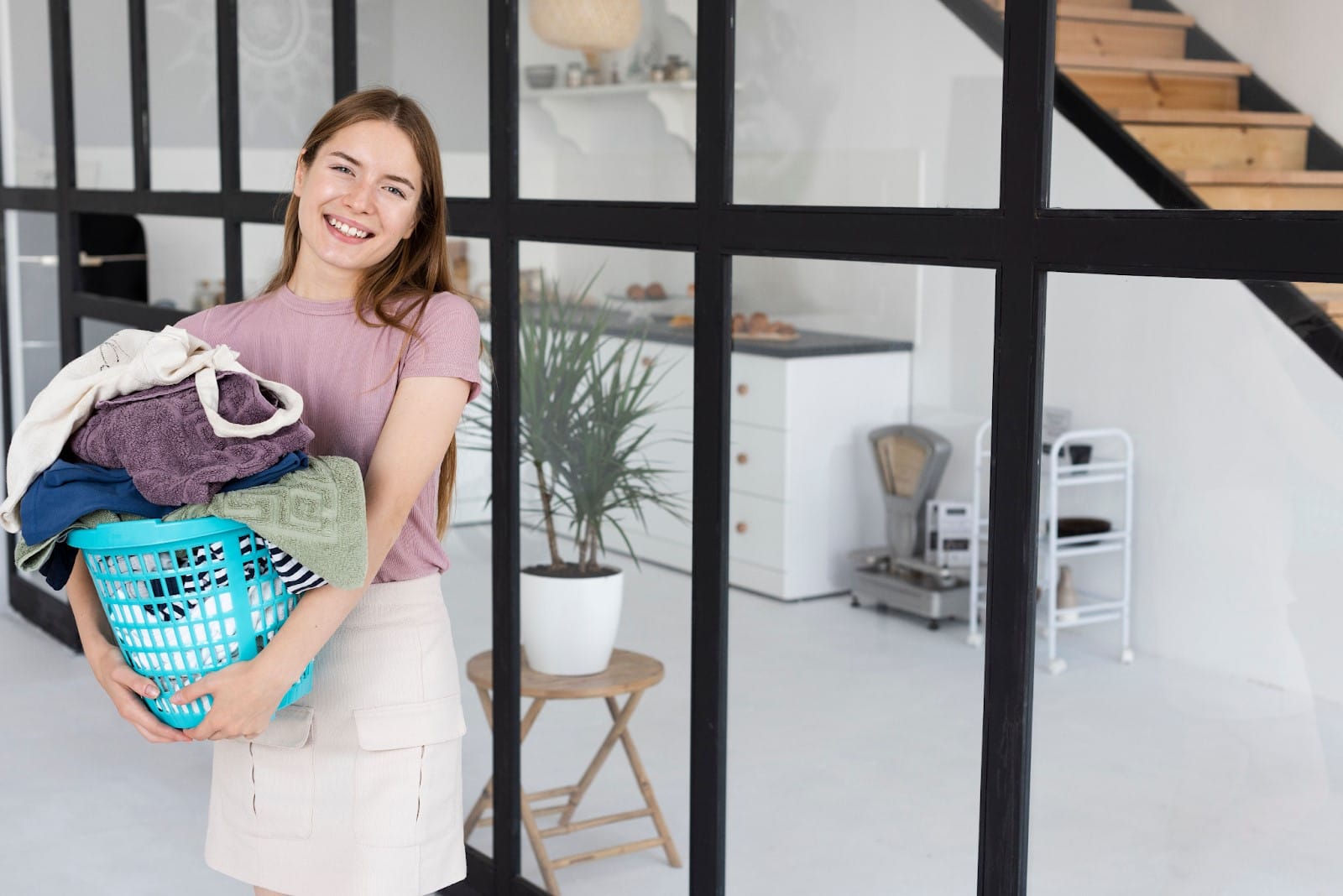
Some people may hang onto excess items or animals that can compromise the health and
safety of the home. It’s important to keep up on cleaning and pay close attention to your common trouble spots so your home can remain safe and healthy. Common categories that stack up easily include:
Are you holding onto books you’ll never get to? Do you have stacks of books you will probably never open again?
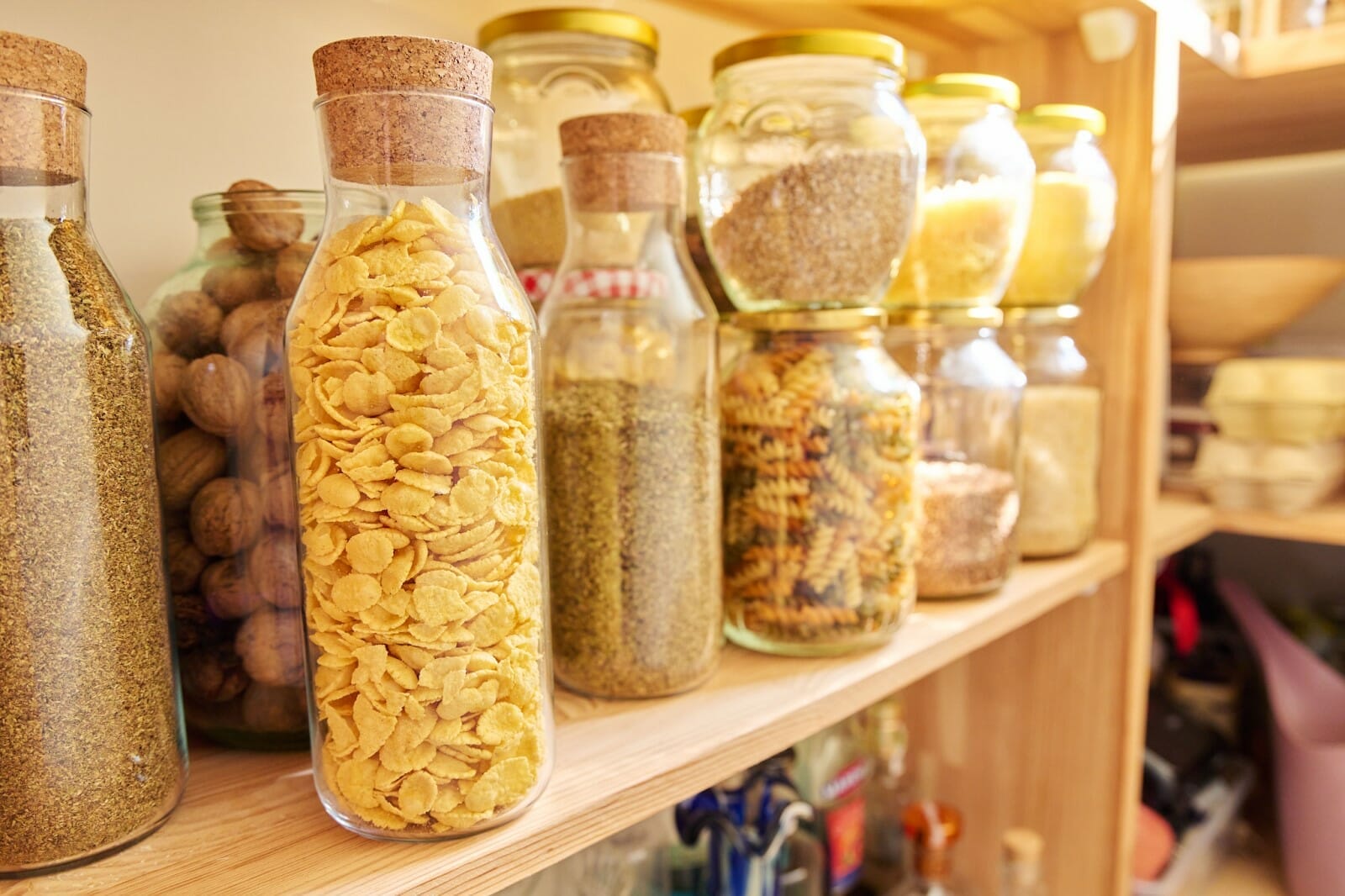
Do you find yourself stocking up on certain foods, even if you can’t finish them before they expire? Are your cupboards filled with ingredients you don’t use?
Do you have stacks of old documents you don’t need anymore? Can you throw them away, or create a filing system for things you don’t have a digital record of?
Do you have items in your closet that still have the price tags attached? Do you find yourself buying and stowing things you don’t intend to use?

Do you have more animals in your home than you can care for? Sometimes people rescue animals out of compassion, but do not have the space or resources to care for all of them. If you struggle caring for your animals, you may want to evaluate your space and consider finding new homes for some of them.
Do you find yourself searching for free items left in others’ trash, or struggling to part with your garbage? Some people struggle to part with trash, whether their own or what they’ve found. However, trash can quickly create dangerous health situations by attracting pests.
Once you’ve identified what you want to change, it’s easy to get carried away with lofty plans. However, if you try to do too much at once, you can get overwhelmed and give up quickly.

Don’t expect to finish everything in one weekend. Remember, it’s a process!
Rather than saying you’ll finish the entire house by a certain date, give yourself smaller deadlines and plenty of space. If you’re not sure how long something will take, set a daily habit goal for yourself. You can set a timer for 5-15 minutes, returning to the same area each day until it’s finished.
Decluttering your home is a marathon, not a sprint! Don’t burn yourself out at the beginning. Keep it small, steady, and consistent.
Sometimes the hardest part of undertaking a big project is getting started! Get the momentum going by deciding what your first step will be.

Make it easier on yourself by picking a spot you can finish quickly. Accumulating some wins will help you feel good about your progress and strengthen your motivation and confidence.
Breaking your goals down into bite-size, achievable increments is a great strategy. Rather than saying “I’ll clean the bathroom first,” focus on decluttering the top drawer.
Once that is finished, pat yourself on the back and move on to the next drawer.
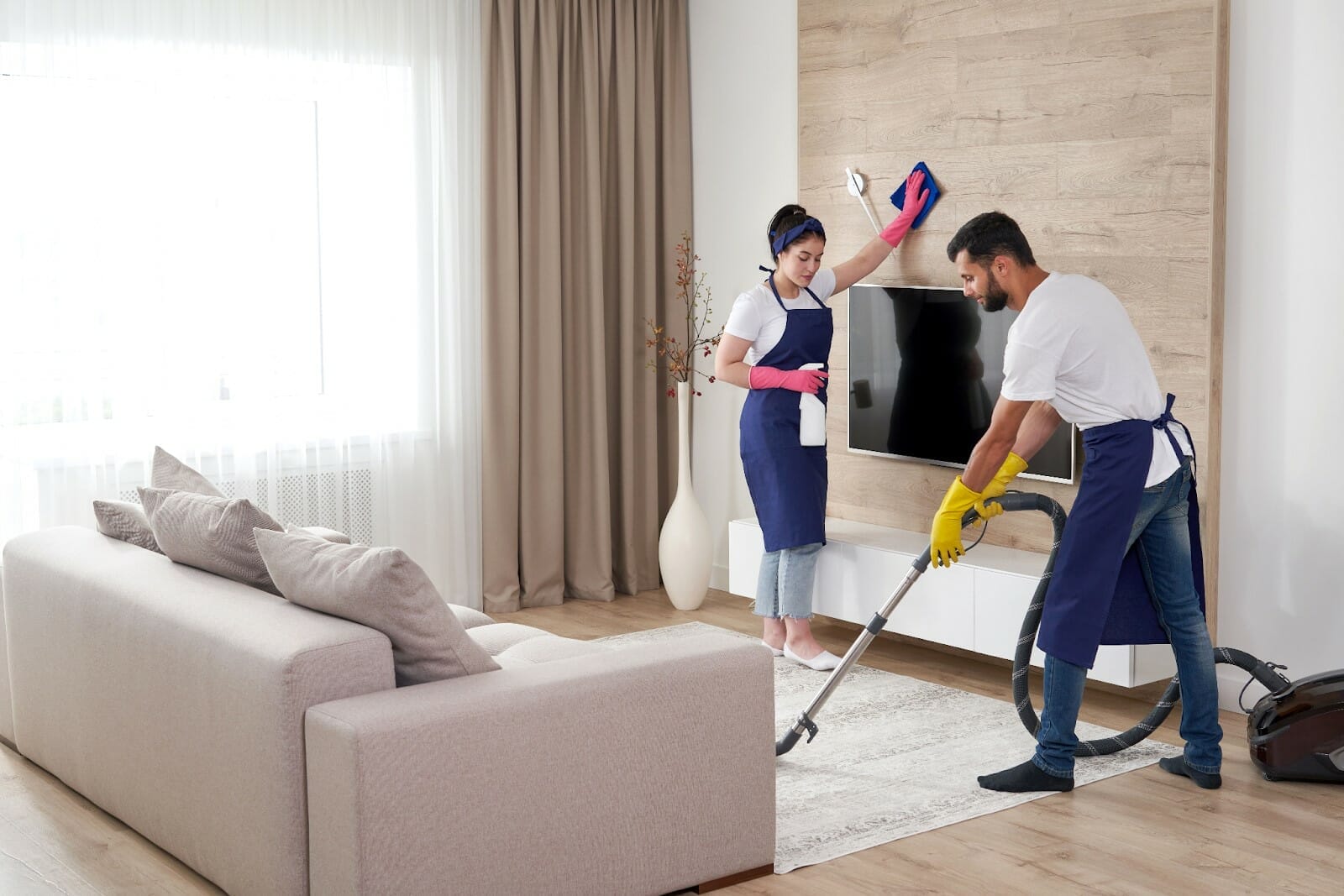
There are numerous decluttering strategies out there. Below, we’ve compiled what we found to be the most effective strategies for your use. Some will work for your personal strengths and needs, and others won’t.
Keep testing the cleaning methods listed below until you find something that resonates with YOU and helps you achieve your goals.
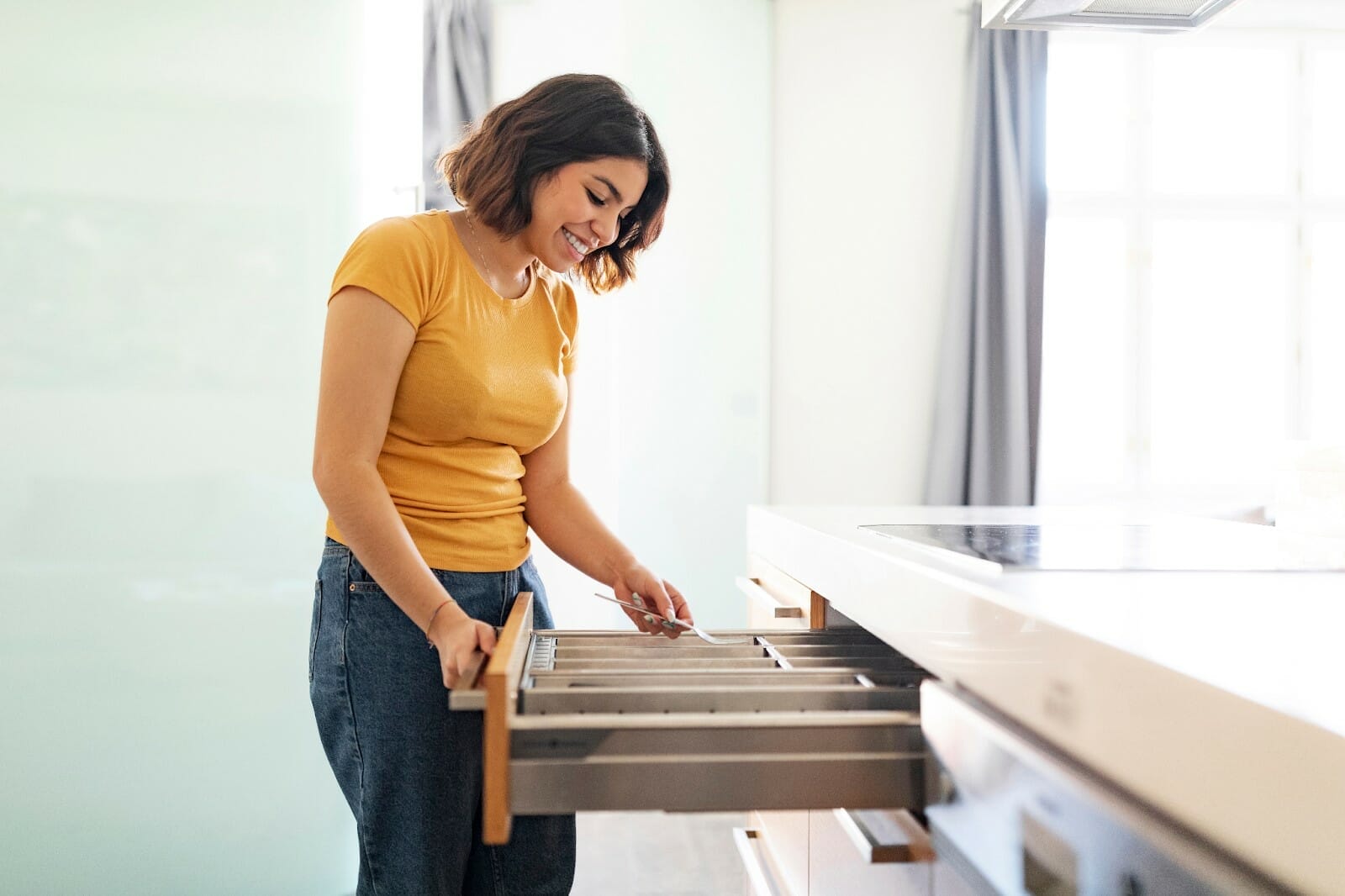
Each day, choose a drawer or other small space in your home and set a time for 5-15 minutes. Work on that space until your timer goes off, and then move on with your day!
Once you’ve finished a space, you can move on to the next area on your list.
The one-drawer-a-day method works especially well for people with ADHD or others who may quickly get distracted.
Sometimes, we hang onto things for years, thinking we’ll need them eventually. With this method, we introduce ways to track if items have been used in the last year. If not, they’re thrown out or donated.

The next time you’re decluttering, ask yourself if you’ve used an item in the last year. If not, get rid of it.
If you’re sorting clothes, it can be helpful to turn all the hangers backward at the beginning of a season. Once you’ve worn something, you can hang it up the regular way.
Once that season is over, look through the closet and remove all the clothes still on backward-facing hangers—these are the pieces you wound up not using.
No matter how useful something is, having too much is unhelpful. If you have extras of something, donate them. Many organizations take extra items, and sometimes these donations are even tax-deductible.
These organizations are all good options to look into when donating extra items:

OHIO stands for Only Handle It Once. This method is particularly useful for mail and email. Don’t let things pile up. When you open your mail, you have three options:
Once you have a digital record of something, you can throw away the paper copy and know that you’ll never lose it.
Kondo’s method of decluttering involves asking yourself if different items “spark joy.” In her bestselling book, The Life-Changing Magic of Tidying Up, Kondo offers a unique process.
She advises going through your homes, touching each item you own, and asking yourself if it sparks joy. Often, she says, we are attached to our emotions and memories surrounding an object, and we don’t need the object itself to enjoy those emotions and memories.

While going through each individual item can feel overwhelming, as you make your way through the different spaces in your home, take an extra minute with the items that feel hard to part with.
Ask yourself if that item truly sparks joy. If you’re keeping it for any other reason (anxiety, guilt, fear), let it go.
One of the main premises of Swedish death cleaning is consideration for your loved ones who will need to deal with your belongings after your passing.
While it may seem morbid, in reality, choosing to downsize can lighten the burden for others in the future. Swedish death cleaning emphasizes taking your time and mindfully evaluating what you still need.
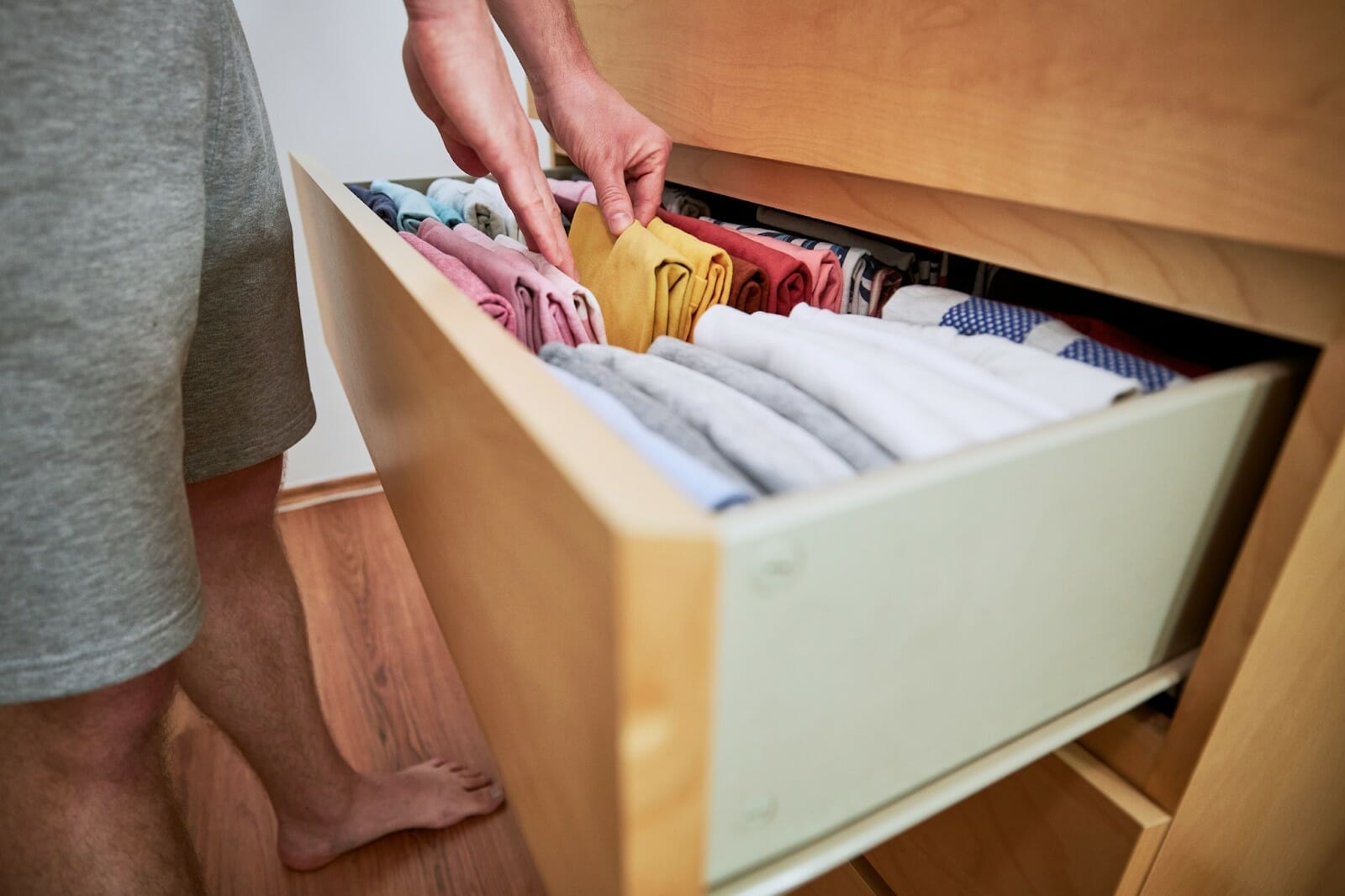
For the 4-box technique, label four different boxes with:
If you’re keeping it, put it in the keep box.
If you don’t need it but it’s still in good shape, put it in the donation box.
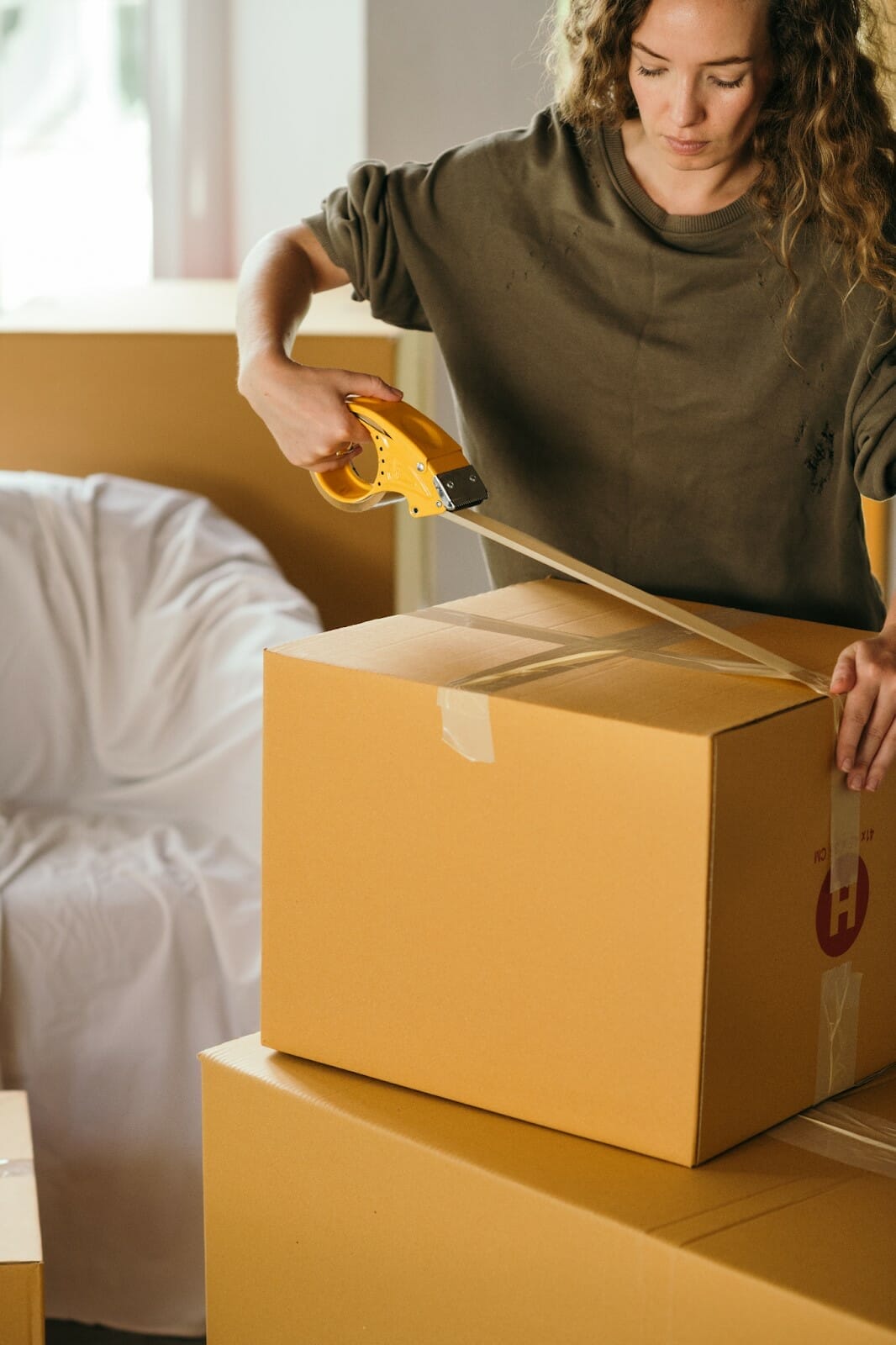
If you don’t need it and it isn’t in good condition to donate, put it in the trash box.
If you need it in a certain season, but not this current season (think baby gear if you’re planning on having another child, seasonal decor, winter clothing, etc.), put it in the store box.
With your four boxes, move to the first space you want to declutter and put items in the appropriate box. Once you’re finished with a space, empty the boxes before you move to the next space. Put away the keep items, throw out the trash items, and so on.
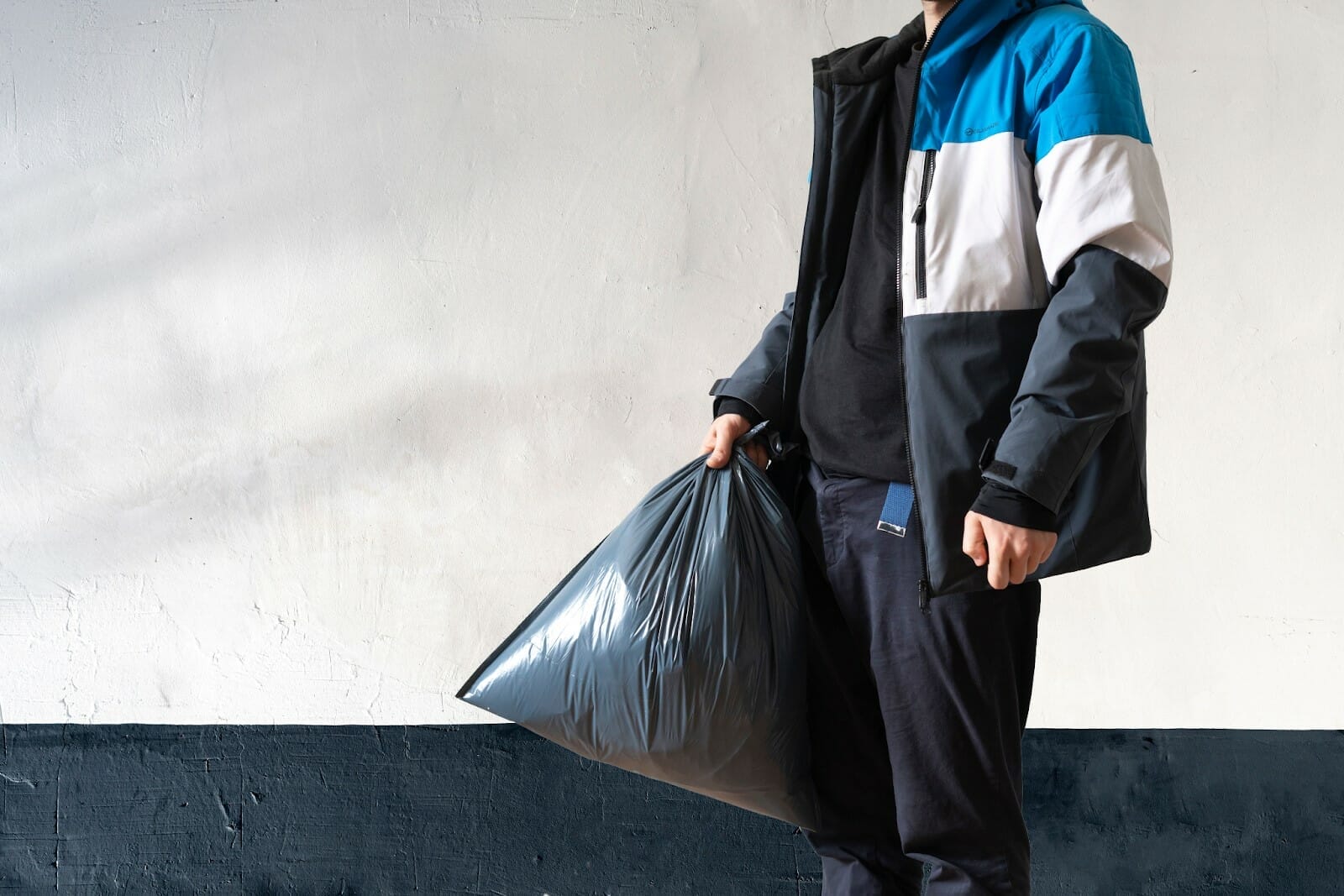
For a motivating win to get your sense of accomplishment up, do a quick 21-item toss.
Grab a trash bag and walk through your house, picking up the first 21 things you see that you don’t need anymore and throwing them away. If you make this a habit, you can quickly clear out things you no longer need and make a big difference in your space.
It’s a great excuse to get up from your desk for a few minutes or fill the time during a commercial break. You can enlist your kids or partner to help too—or race to see who can toss 21 items first!
If you’re saving something for a rainy day, put it on a firm deadline. Box up the items you think you’ll need someday and write an expiration date on the outside of the box.
If you haven’t gone looking for the items by that date, simply donate or throw away the box. Put a reminder in your phone or calendar so you don’t leave the box gathering dust in your garage for years.

For a week-long challenge, choose 7 manageable areas you want to tackle. Each day for a week, clean one of your zones. Make sure these areas are small so you don’t get overwhelmed—you want to set yourself up to win by picking things that can be accomplished in a day!
Sometimes we need to make a few purchases in order to organize our homes. It makes it even harder to clean things up if you’re dealing with:
Finding a storage bin, new hangers, or another organizer to corral these items can make all the difference. But beware, don’t let shopping for organizational solutions become a new way to clutter up your home.
Recognize that if you are constantly buying new bookshelves or storage bins, it’s probably time to go through your items and get rid of some of them.
Getting rid of things can be a painful process, but understanding your reasons for decluttering increases your motivation. Ask yourself these 12 questions to decide if something deserves a spot in your home:
We want to live in clean spaces. After all, improving the cleanliness of our homes has major physical, mental, emotional, and social benefits.
Trends in organization and home decor ebb and flow, but a certain fascination with decluttering and cleaning stays consistent. The reality is that we all struggle to bridge the gap between our goals and reality—which is why cleaning and organization trends are so pervasive in pop culture.
Celebrities have a heavy influence on our design and cleaning trends. All of the most popular decor trends— Scandi, Japandi, and the Minimalist Movement—are popular because celebrities made them that way.
Even cleaning trends like:
Are considered trends because influencers rave about how effective they are.
At the root of those trends is a deep-seated human obsession with understanding how we can reach our cleaning goals despite all the factors that prevent us from getting there.

At the beginning of the Covid-19 pandemic, most of the United States was under strict shelter-in-place orders. Suddenly, we were asked to conduct work, education, and family life within four walls.
Even now, while many of us have ventured out of our homes for work, school, travel, and entertainment, once again, our lives have shifted.

Members of the workforce may still be working remotely or adopting a hybrid schedule. Many families have decided to continue homeschooling their children.
Spending more time than ever in our homes has given many of us an increased awareness of the spaces where we live. Being home all the time may have created more challenges in keeping things tidy, but it also increased our awareness and appreciation of our homes. You probably have a clearer view into what you’d like to improve about your living space.
If increased time at home has sparked your curiosity about ways to keep it more peaceful, clean, and uncluttered, keep reading to learn more about modern design and organizational movements.
Current decor trends point to a desire for clean, uncluttered spaces. Simple lines, natural colors, and a minimalistic appearance characterize the popular Scandi and Japandi-style interiors.
If you’ve been to an Ikea, you’ve been exposed to Scandi design. Short for “Scandinavian,” this trend originated in the countries of Northern Europe and focuses on combining functionality with beauty. Scandi values:

Scandi evokes warmth and peace without being kitschy or cluttered.
Japandi design combines simple Scandi ideals with Japanese beauty. Japandi emphasizes our relationship with the natural world and sustainability while maintaining the aesthetics that made Scandi so popular. Japandi pieces tend to be sleeker than Scandi’s rustic touches and use deeper color tones.
Both styles are grounded in minimalism and characterized by a lack of clutter, evoking peace, calm, and contentment—something we all crave, especially after spending more time than ever at home.

In recent years, minimalism has become the subject of:
Devotees evangelize the peace they feel about letting go of extra possessions and living a simpler life. Aspiring minimalists can look to dozens of sources for guidance on how to cut down on their stuff and simplify. While minimalism is a popular buzzword right now, its roots go back centuries.
In the 1800s, transcendentalist philosophers like Ralph Waldo Emerson and Henry David
Thoreau wrote about the virtues of simplicity and living with less.
Throughout the 20th century, design movements focusing on simple materials and sleek lines have gone in and out of popularity. Real Simple, a magazine that is a staple in many homes, was started in 2000, and emphasizes “keeping life simple and stress free.”
The longstanding popularity of minimalist movements goes to show that we want to be in peaceful, clean homes—we just don’t always know how to get there.

Because cleaning is a fact of life that occupies our minds daily, it’s natural for trends to mirror this. Certain methods and philosophies are having their heyday right now. Shows, books, and social media factor in the rising popularity of these organizational trends.
Marie Kondo revolutionized decluttering with her “spark joy” method of getting rid of any items
that don’t make you feel happy. She recommends thanking items that have served their purpose before throwing them away or donating them.
Kondo acknowledged in a recent article that with three children, she still struggles to keep her home organized. While her home is no longer pristine and tidy, she still embraces minimalism not only in physical spaces but in how she spends her time.

Margareta Magnusson published her book, The Gentle Art of Swedish Death Cleaning, in early 2018. Despite the initially shocking title, Swedish death cleaning, or döstädning, is a simple and considerate practice.
Swedish death cleaning is based on the idea that as you age, you should begin clearing your home of excess possessions. This helps you simplify your life and focus on what matters as you age. It also helps your loved ones by giving them fewer things to manage after your passing.
The Home Edit is a company founded by Clea Shearer and Joanna Teplin. They have created:
The Home Edit’s main philosophy is combining form, function, and fun for a home that stays neat and organized while keeping personality as a strong feature. They are very influential in the home organization space. Their marketing and personality-infused cleaning tips give them a broad appeal. They appeal to people who want a neater, more organized space but don’t resonate with the severity of more minimalistic approaches.

Organizing trends come and go, but spring cleaning has been a popular seasonal ritual for centuries. Humans have always needed to be intentional about taking time to clean and organize.
The practice has roots in many religious and cultural traditions like:
In Judaism, homes are traditionally cleaned before Passover to remove any yeast products.
A Buddhist festival in Thailand held in April involves purification rituals, including cleaning homes and temples.
Khaneh Tekani, or “shaking the house,” is a Persian tradition dating back over 3,000 years. In the spring, families cleaned and decluttered their homes to prevent bad luck in the coming year.
Yogis practice saucha, a purity practice, in the spring. Part of this practice is creating clean, non-distracting environments for home and work.

There may also be biological reasons for our drive to clean in the spring. As we experience more sunlight, our bodies produce less melatonin, driving us to be more alert. After a long, sleepy winter, the warm weather provides an opportunity to set things in order.
If the thought of gearing up for spring cleaning has your heart pounding, you’re not alone. The extra sunlight and societal pressures create intense feelings around spring cleaning.
Society tells us we should be ashamed when we struggle to keep our homes clean, but in reality, most of us fall somewhere on the hoarding scale. There’s a reason the human race has been doing spring cleaning for thousands of years!

We’re all a work in progress. There’s no need to feel shame no matter how out of hand your home feels to you.
It’s time to end the stigma around hoarding. There’s nothing wrong with asking for help. Whether you simply need some ideas to help you get started or are looking for some hands-on assistance, we’ve got you covered.
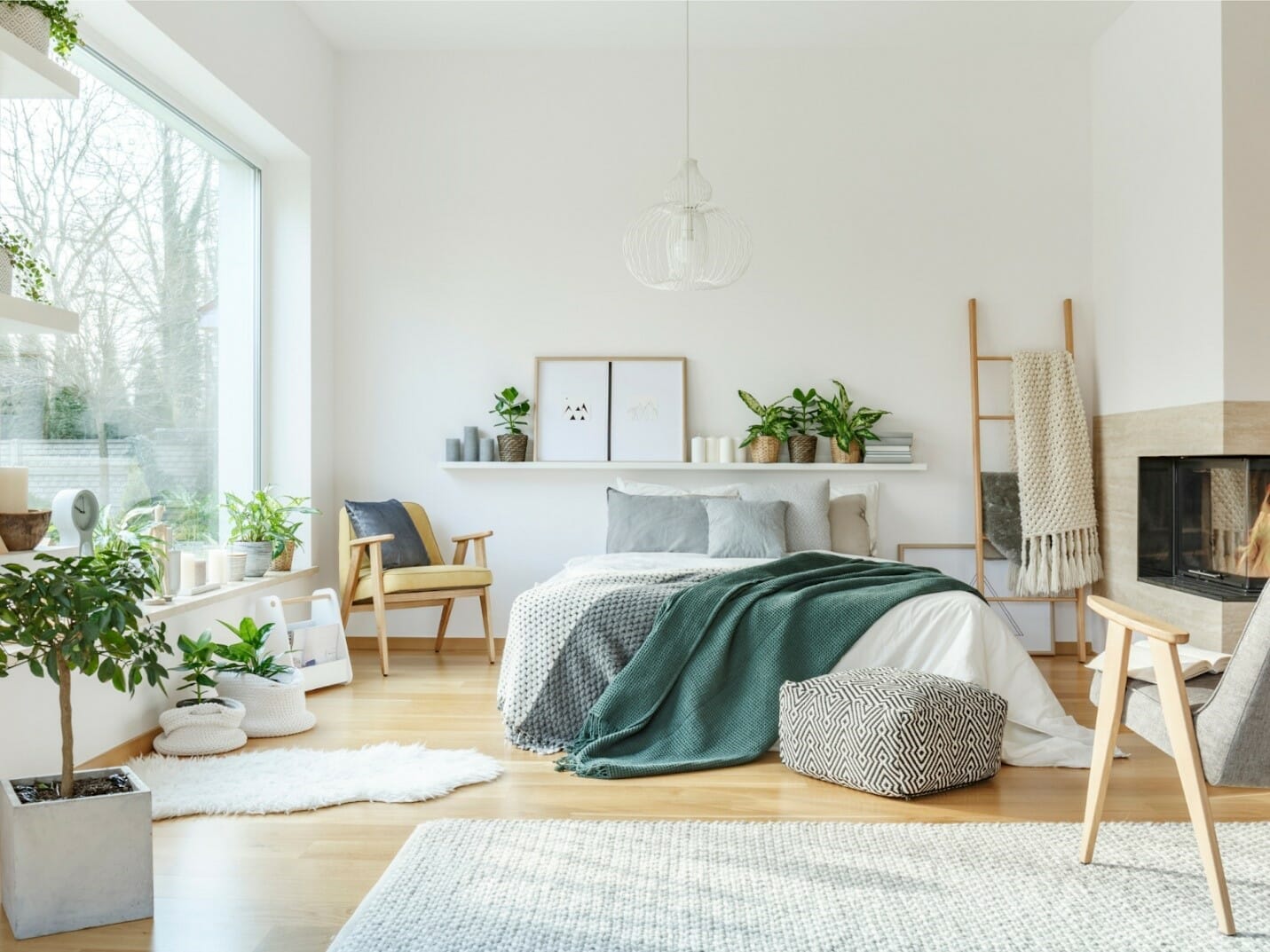
Is having a disorganized home such a big deal? Why not let people live how they want to live?
Having a clean, comfortable home affects people in different ways:

Keeping a clean, organized home is well worth all the physical, mental, emotional, and social benefits that come with it.

From sleep quality to infection control, cleanliness affects how well your body functions from day to day.
Here are a few ways keeping an orderly environment can help you physically:
Keeping a clean home reduces the risk of illness-causing pathogens being passed to residents of the home.
Food preparation areas should be sanitary, especially after handling raw meat.
Bathroom areas should be cleaned regularly, and animal waste should be taken care of to prevent disease.
People with cluttered homes are more likely to experience insomnia. It’s hard to know if it stems from increased stress levels, difficulty getting comfortable in a cluttered space, or from another cause, but cleaning up clutter should help you get a better
night’s sleep.
Allergies and asthma attacks can be triggered by dust, pet hair and dander, and mold. Keeping homes free of these triggers can improve allergy and asthma symptoms.

The state of your home can have profound effects on your mental state. A cluttered, disorganized space can stress and overwhelm us. Severely cluttered homes can also cause feelings of shame and anxiety. Here are a few ways keeping your home in order can help you function well mentally:
A clean, uncluttered space helps our minds stay on task without distraction. When we see more items in our line of sight, it can actually slow down our brain’s processing speed and make it more difficult to focus.
When we constantly look around us and see work that needs to be done, it’s difficult to feel calm. How can we relax when we’re surrounded by chaos? Maintaining a clean, organized space will create tranquility and peace-of-mind.
Setting your home in order can be empowering! When you are able to make your space look and feel the way you want it to be, you feel a sense of accomplishment.
When your home is constantly in good condition, you can depend on it as a place to relax and feel at peace. Regardless of what happens outside your home, you have a refuge where you can retreat from the world.
Creativity needs margin and blank space to grow. When your space is not distracting from your thought process, your brain can focus on new ideas.

Just as tasks requiring deep thought can be difficult when our homes are chaotic, our emotions can also be hard to settle when our environment is in upheaval. Here are some emotional benefits to improving the cleanliness of your home:
When you’re in a clean, comfortable environment, you feel better emotionally. Many studies show a relationship between messy homes and unhappiness.
Not only does being in a clean, restful environment contribute to being better able to focus and be mindful, the act of cleaning itself actually offers an opportunity to practice mindfulness. Being mindful of the task at hand can decrease feelings of anxiety and increase feelings of inspiration.
Emotional regulation is the ability to respond to your emotions mindfully. This skill can help you reframe negative emotions and cope with stress. When your home is less cluttered, you are better able to attend to your emotions and find peace.

Your home doesn’t only affect you—it also has an effect on the people around you. When your home is messy and disorganized, it can actually hinder your relationships. Here are some ways cleaning and organizing can benefit you socially:
Cleaning up can create a welcoming space for you to spend time with those you care about. When your home is messy and disorganized, it can be difficult, or even embarrassing, to host others.
You may feel embarrassed about the state of your home, or your friends may not be comfortable there due to cleanliness issues, a lack of seating due to spaces being taken up by clutter, and so on.
When your home is clean and uncluttered, there is space for family to come and stay. Even if you need to set up cots or sleeping bags to accommodate extra guests, they can still be comfortable with you. With a clean floor and stored belongings, this can become a reality.
In severe cases, disorganization and lack of cleanliness can lead to structural issues with your home. Appliances may fall into disrepair and become hazardous, or the home’s structure can even be compromised by the weight of your belongings.
When your things are in order, there is no danger of needing to relocate. However, when your things are in order, there is no danger of being forced to relocate. That stress is non-existent. At a certain point, a health inspector could become involved.

Everyone can improve the state of their homes—we all struggle to keep things clean and hang on to only the possessions we really need.
However, when we take the necessary steps to tidy up and declutter, we can see benefits in many different areas of our lives: physically, mentally, emotionally, and socially.